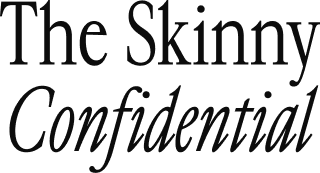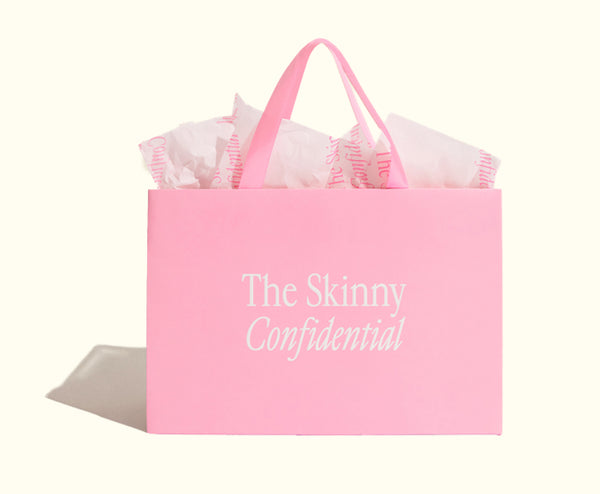
For most women, removing facial hair is a non-negotiable necessity. And, more times than not, it’s not about whether to do it—it’s about how to do it right.
There are lots of hair removal options out there, and all of them seem to come with their own pros and cons. Naturally, this makes it harder to choose the correct method(s) with confidence.
To help you out, we’re ranking all the major hair removal methods from worst to best. You’ll get all the info you need to remove unwanted hair in a way that’s safe, convenient, and super effective.
From skip-it to holy grail—here’s how each method stacks up:

Which Procedures Must Be Avoided When Removing Facial Hair?
There are two main types of hair removal techniques: depilation and epilation. Depilation removes hair at the skin level, whereas epilation removes hair at the root.
Depilation is less likely to cause irritation, but needs to be done a lot more often. Epilation causes more pain, but it tends to have longer-lasting results.
At the end of the day, both have their benefits and drawbacks. We’ll get into what practices fall under each category and why we ranked them where we did.
Hair Removal Creams
Let’s start with the worst. Hair removal creams work quickly, are usually painless, and can be done at home on a budget.
However, they rely on harsh chemicals to dissolve hair which can lead to skin irritation and repeated chemical exposure. And we do mean repeated, because hair removed this way grows back fast.
Ultimately, it’s not super effective and is definitely NOT worth the chemicals.
Epilators
If you want to remove hair from the root, epilators can do the job. They roll along your skin and pluck out hair. No appointment or chemicals needed!
However, mechanically pulling hair from the root can be super painful and lead to ingrown hairs. On top of that, your hair has to grow out a bit before the epilator can work effectively.
It’s not sustainable, it doesn’t offer great results, and it hurts. All around, not our favorite.
Electrolysis
Using an electric current, electrolysis destroys hair follicles so hair won’t grow back. It actually works on all hair types, which is impressive.
More importantly, electrolysis is great for targeting small areas on your face. Think sculpted brows or removing those pesky, hard-to-see chin hairs.
However, hair removal sessions are painful and time-consuming. It takes months and up to 20 sessions to get results, which can get expensive fast.
Skin irritation is almost guaranteed, and in some cases, electrolysis can cause scarring or hyperpigmentation. Convenient? Sure. Worth it? Not in our opinion.
Laser Treatments
Like electrolysis, laser treatments offer long-term hair reduction. It works relatively fast, and though you do need multiple sessions, it only takes about 8 rounds.
Laser hair removal professionals can target small areas on your face for your ideal look. And because it destroys hair follicles, you’re less likely to deal with ingrown hairs.
The downsides? It’s expensive and can be painful. Plus, it doesn’t work for everyone. People with dark hair and light skin may not see optimal results.
The same goes for women with PCOS. This hormonal condition results in excessive hair growth on the face and body. Hormonal imbalances can reactivate dormant hair follicles, meaning new hair may continue to grow regardless of which removal method you use.
Intense Pulsed Light
This option is technically different from laser hair removal, but it’s really similar. Pulsed light disables hair follicles to reduce hair growth.
It’s gentle, effective, and gets rid of hair pretty fast. But that’s not even our favorite part. We really love that it also treats hyperpigmentation, sun damage, and broken capillaries.
There are two ways you can try this. First, you can do this at home with an IPL device. However, the devices require up to 10 sessions to produce visible results and hair removal isn’t always permanent. Second, you can get IPL from a professional. You get better results, but obviously it’s more expensive.
If you’re interested in this method, make sure to check out our post, “Skincare After IPL Photofacial.”
Tweezing and Plucking
We’ve all manually pulled stray hairs here and there, but getting rid of a whole face of vellus hair and facial hair with tweezers would be brutal. There’s no way—it would take forever.
Tweezing and plucking are the best spot treatments because it’s precise and inexpensive. You just don’t want it to be your exclusive method of hair removal.
Keep a pair of tweezers in your toolkit, but save them for small jobs.

Waxing or Sugaring
Waxing or sugaring are definitely effective. Since it removes hair at the root (depilation!), the results are long-lasting. Plus, repeated waxing eventually leads to finer hair regrowth over time.
Even though wax strips and other waxing techniques are effective, we know they can be uncomfortable or even painful. Skin irritation is pretty common, and any time you remove hair at the root, you’re at risk of ingrown hairs.
That said, sugaring is an alternative that uses natural ingredients. It has the same effect and process, but it’s usually gentler and less likely to cause irritation.
(Bonus: We know we’re discussing hair removal on your face, but read this post on Brazilian bikini waxing for our POV on waxing for other parts of your body.)
Shaving
The best hair removal technique? Shaving. It’s exfoliating, skin-brightening, and leaves your face baby-smooth. It can even help your skincare products absorb more effectively into your skin.
Shaving rarely causes irritation if you use a high-quality shaving cream (not gel) like our Hot Shave Cream. And because it removes hair gently at the surface, there’s a lower risk of ingrown hairs.
No harsh chemicals, expensive treatments, or time-consuming appointments. Simply just shave every 1-2 weeks to get rid of unwanted hair and enjoy all the benefits of a close shave.
Want to know if you can do it more often? Check out this post on how frequently to shave your face as a woman and learn how to add shaving seamlessly into your skincare routine.

What to Do After Removing Facial Hair by Shaving
Rinse with lukewarm water.
Once you’re done, rinse your face with lukewarm water to remove any leftover shaving cream or stray hairs.
We personally recommend avoiding cleansing after shaving. Definitely cleanse before shaving, but cleansing after isn’t really necessary as long as your razor is clean.
Plus, your skin is usually a little irritated directly after shaving—no need to make things worse with a cleanser. Just lukewarm water and a soft washcloth are fine.
Soothe your skin with an Ice Roller.
To soothe any of the irritation and reduce redness, use the TSC Ice Roller after you shave.
It not only boosts circulation, evens out skin tone, and helps your skincare products absorb better, but it also feels incredible. It turns your shaving routine into a mini spa session.
Apply De-Puffing Face Oil.
To get the most out of ice rolling, apply TSC De-Puffing Face Oil at the same time. It helps replenish hydration and restore your skin barrier.
Moisture loss is common after shaving (though shave cream helps a lot). It’s essential to nourish and hydrate your skin post-shave.
Hydrate with a light moisturizer.
A moisturizer is essential after a face oil, because face oils are lightweight. Though they’re full of nutrients, they can evaporate off the skin easily.
A moisturizer locks it all in and helps support that skin barrier, as well. The stronger your moisture barrier, the more resilient your skin will be to environmental stressors.
Don’t forget your SPF.
Again, shaving can temporarily compromise your moisture barrier. This is a normal effect of exfoliation, but it’s important to be aware of it.
With dead skin cells removed and your barrier slightly disrupted, your skin is more exposed and susceptible to sun damage. That’s why SPF is a must!
TSC Caffeinated Sunscreen not only protects your skin from the sun, but also nourishes and refreshes it, leaving your face smooth and radiant. And when you pair the SPF with a face oil and high-quality moisturizer? You’re golden.
Watch for skin reactions.
Everyone’s skin reacts differently to various hair removal methods. Shaving is generally well-tolerated, but it’s important to pay attention to how your skin responds.
If you notice significant irritation, breakouts, or cuts, it may be time to adjust your routine—either by trying a different hair removal method or changing your post-shave care.
Shaving is the best way to remove facial hair as a woman.
At the end of the day, shaving comes out on top as the safest, most effective, and convenient way to remove facial hair. It exfoliates, brightens, and leaves your skin smooth—all without harsh chemicals, expensive treatments, or painful procedures.
For more skincare tips and product recommendations, browse The Skinny Confidential Shop!






